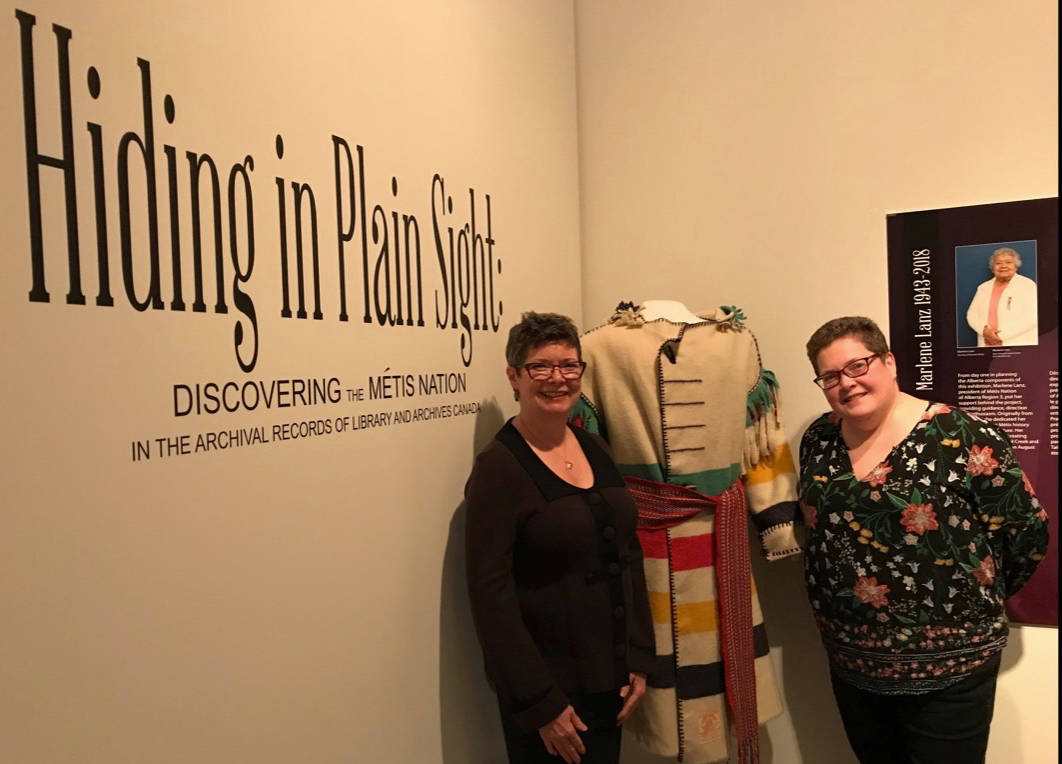A fascinating new exhibit that shines light on the history and culture of the Metis nation is on display at the Red Deer Museum + Art Gallery.
‘Hiding in Plain Sight: Discovering the Métis Nation in the Archival Records of Library and Archives Canada’ – a travelling exhibit – shows through to March.
This exhibition explores the portrayal of the Métis people in reproductions of artworks and photographic collections, and via archival descriptions.
For this showing only, Library and Archives Canada has loaned original artworks and documents from their collection as well.
Supported by the MAG, local Métis citizens have also shared their family stories and treasures from their collections for the exhibition, along with artifacts loaned from several institutional collections.
Ultimately, the exhibition aims to foster a better understanding of the history and culture of the Métis Nation.
“The story of the Métis people in Central Alberta is one of the keystones of our history,” said Lorna Johnson, the Museum’s executive director. “This exhibition presents a great opportunity to explore Métis culture and history across Canada, and to place our own history into that larger context.
“We are also very grateful to the members of Central Alberta’s Métis community who have helped us to assemble local stories to supplement the touring exhibition.”
The Métis emerged as a distinct people or nation in the northwest during the course of the 18th and 19th centuries.
“We know there were Métis here; we know this was a gathering place,” she said. “So over the past year, we hosted a whole series of community meetings and talked about exhibition, and invited people to tell us their stories,” she explained.
Having the exhibit ongoing during the coming Canada Winter Games is also a plus, as it’s a national story, she said.
“It’s a lively, exciting, glorious culture.”
This area is known as the historic Métis Nation homeland which includes Manitoba, Saskatchewan and Alberta, extending into the Northwest Territories, B.C., Ontario, Minnesota, Montana and North Dakota.
Kim Verrier, exhibits coordinator for the MAG, had several discussions with local families about their histories and experiences.
“You go into a conversation and you think it’s going to go one way, but it really leads to the strength found in the St. Denys family or the Dumont family,” she added, referring to a couple of clans featured in the exhibit. “For me, the whole process was special. These families allowed us in to learn their stories. They shared their stories freely and willingly with some reservations because they wanted to know what we were doing and wanted to make sure everything was done in a respectful way,” she added.
“Even from when we started this project, how things showed up on our doorstep and how things came along – I don’t want to say it was serendipitous but you have these moments of, ‘Oh, this just opened up and we got on a whole new path’.”
Johnson agreed.
“That’s what was so incredible. What we hadn’t been able to understand was that it is a very closely linked community.”
A special launch was held earlier this month, and Johnson pointed out that many local families of Métis descent attended to mark the occasion. “After all the formal stuff, there was this buzz of all the people talking to each other about their stories – it was really wonderful.
“It also encouraged people who hadn’t really thought about their stories or their histories all that much to do a little research and to talk to some of the elders to get those stories,” she explained.
The exhibit is packed with all kinds of compelling stories and interactive features as well – you can teach yourself how to dance a jig, for example. You can also dress up and snap a selfie, so it’s a rich, colourful and informative exhibit but also a lively and fun one as well.
“It makes the point that it’s a living culture,” said Johnson “And when you look at the richness that the Métis people brought to our culture – so much of what we think as Canadian is Métis-based.”
Johnson noted that’s an inspiring notion, considering as well the uphill battle the Métis have had to fight over the past 150 years or so.
Meanwhile, Verrier hopes that visitors leave with a renewed desire to dig more into their own family histories.
“We are really doing our best to honour and to tell those stories,” said Verrier. “There are points of hardship that you see, but there’s also that persistence and resilience you can see as well.”
The exhibit will be up through to March 17th.



